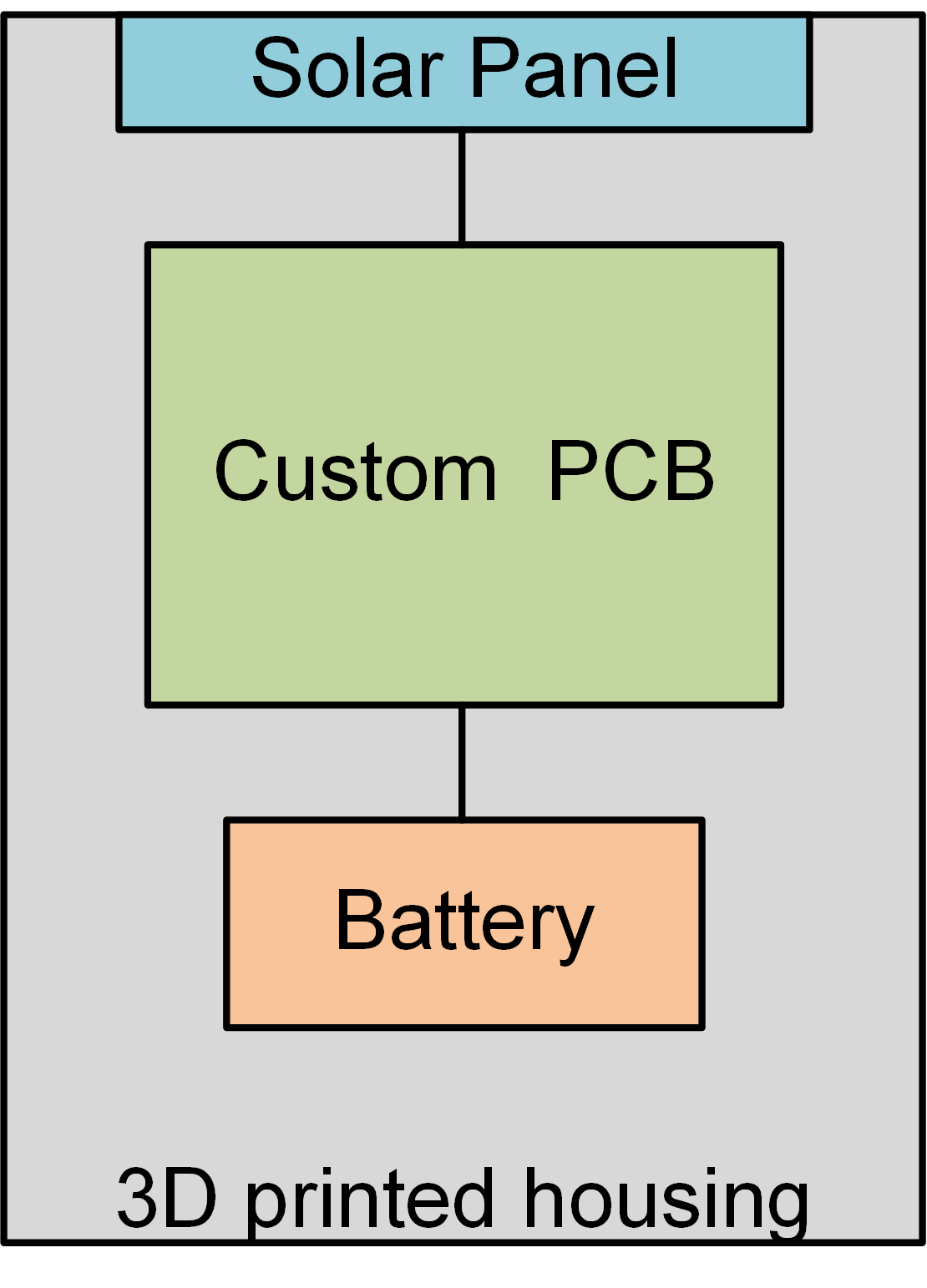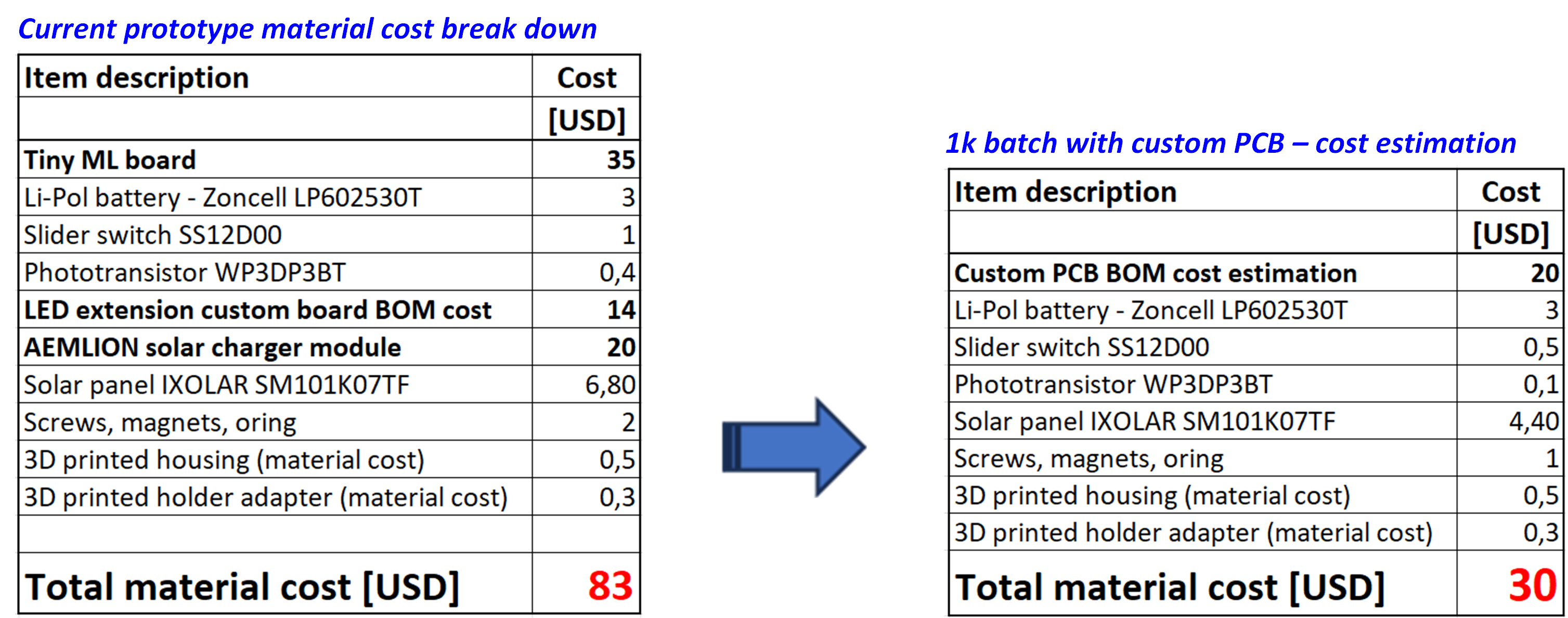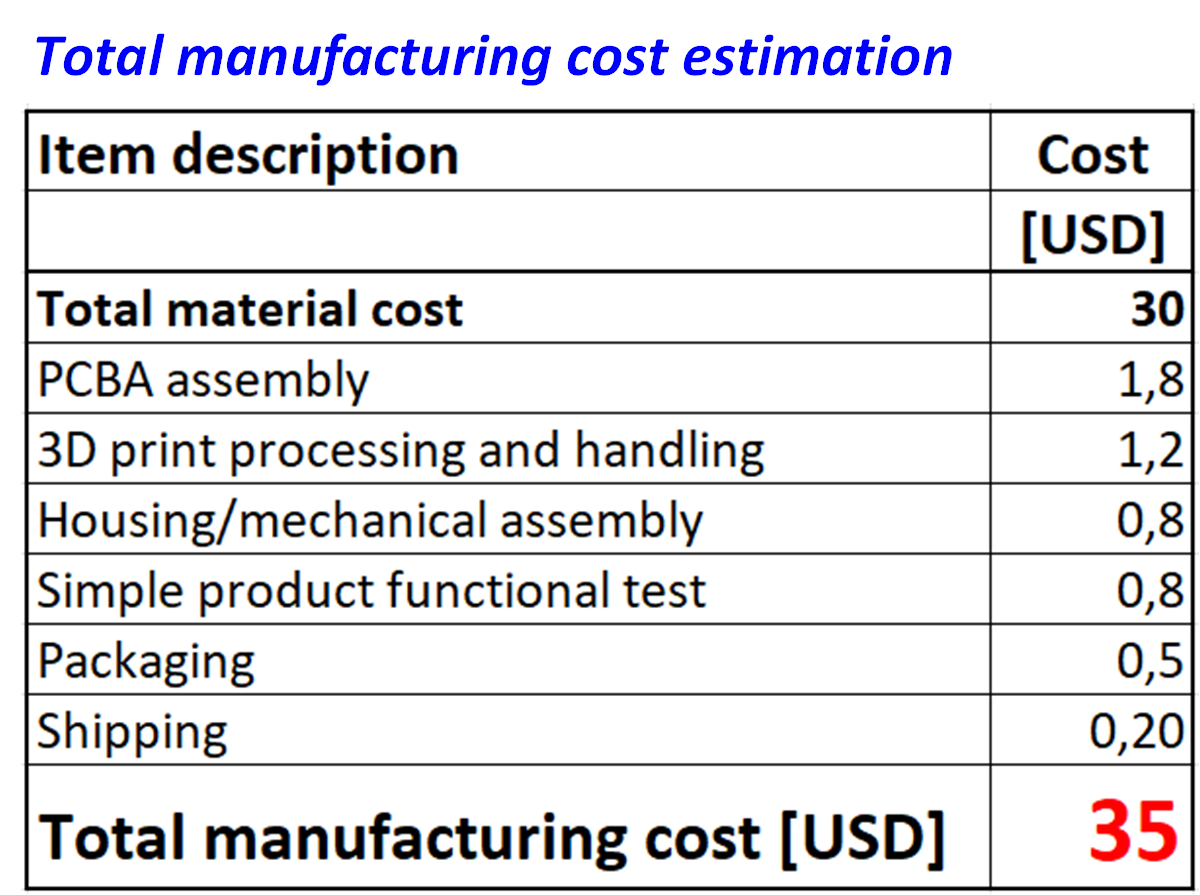As I have indicated in my project entry video, I plan to turn the PionEar sensor into mass production. Of course, this can be done after the careful evaluation of the “market size” and annual sell volume estimation. This process is currently ongoing. However, I would like to demonstrate possible scenario in what way the PionEar sensor can be produced in larger quantities.
First of all, it is necessary to realize that the current proof of concept prototype - PoC is mostly built on development boards. This is good for building the first concept, performing various tests and evaluations, or even providing it to the first customers to receive valuable feedback. Using the evaluation boards saves a lot of time that would be needed for the development of custom-made designs. However, it is not very effective in terms of cost and size/fit factor. For this reason, I plan to develop a custom-made PCB where all the electronics will be placed. This will greatly simplify the sensor assembly process as the wiring will be minimized to a few connections (Battery, solar panel) With a custom-made PCB one can also expect cost savings on the component/material level.
The next part to consider is the manufacturing process of the plastic housing. Currently, the whole housing is made with a 3D printer. The 3D printing process is again very suitable for prototyping and product iteration. But with the current ease of access to 3D printing technologies and significant price reduction, it can preferably be used for low production volume as well. I plan to use 3D printed parts also for production in volumes of several hundred up to one thousand pieces per year. According to my investigation up to this volume, 3D printing will be cheaper compared to injection molding. I also plan to greatly simplify the process of creating the light diffuser for the illuminated logo. In larger volumes, I will very probably use dual-color 3D print (partially translucent filament for logo infill) instead of pouring the SLA epoxy as described in the build instructions.

In terms of cost, I have evaluated the material cost for the current prototype and compared it with an estimated cost for a version with a custom PCB (calculated for 1000 pcs batch). As can be seen from the tables below, the cost has been reduced to approximately 35% of the initial value.

In order to complete the cost of the product, the labor costs of the production process and the costs of transport and packaging must also be calculated. The final cost of the sensor is evaluated in the following table. If you're wondering how I derived these figures, they're based on a combination of my experience in electronics manufacturing, Prusa 3D Printing Price Calculator and a discussion with ChatGPT 😊

 Jan Říha
Jan Říha
Discussions
Become a Hackaday.io Member
Create an account to leave a comment. Already have an account? Log In.